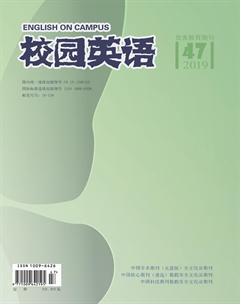An Analysis of Satan Archetypes in A Tale of Two Cities and Othello
WANG Xiao tong
【Abstract】Satan is a classic literary image in biblical stories who seduces others to do evil things. This paper intends to take Dickens A Tale of Two Cities and Shakespeares Othello as examples, in order to analyze the application of Satans image in these two literary works by using Fryes archetypal theory.
【Key Words】Archetype Criticism; Satan Image; A Tale of Two Cities; Othello
【摘要】撒旦是圣經故事中引诱他人作恶的经典文学形象。本文以狄更斯的《双城记》和莎士比亚的《奥瑟罗》为例,运用弗莱的原型理论,分析撒旦形象在这两部文学作品中的运用。
【关键词】原型批评;撒旦形象;《双城记》;《奥瑟罗》
【作者简介】WANG Xiao tong,Graduate School,Harbin Normal University.
【基金项目】本文系2019年哈尔滨师范大学“硕士研究生学术创新项目”(HSDSSCX2019-64)阶段性成果。
Ⅰ. An Introduction of Archetype Theory
Archetypal criticism theory originated in the 1920s and reached its peak in the 1950s. Its earliest theoretical form was derived from classical ceremony theories, after that, James Frazers cultural anthropology and Carl Jungs collective unconsciousness theory was integrated into it. Northrop Frye is the epitome of archetypal criticism theory. He believed that “Archetypal is the symbol of communication, and is concerned with viewing literature as a mode of social phenomenon ” 99 Just because of that, Frye combined with the research results of Fraser and Jung, so that the concept of archetypes entered the field of literature.
Ⅱ.The Analysis of Satan Archetypes
In biblical stories, at first, Satan was a fallen angel, but gradually it evolved to the governor who is directly against with Lords power of kindness. Finally, Satan became the incarnation of vice. In A Tale of Two Cities and Othello, Marquis Evremonde and Iago also has the characteristics of Satan. Firstly, Satan likes to tempt others. In Genesis, Satan seduced Adam and Eve to eat the fruit of the tree of good and evil: “Cant you eat all the trees in the garden?” 4 Marquis Evremonde put “the bucket of gold coins in a small box and left it at my door.” 315 While in Othello, Iago seduced Othello to believe that Desdemona betrayed their marriage. Secondly, Satan was jealous of Jehovah, so he was driven out of heaven and became a fallen angel. Marquis Evremonde was jealous of the power of French King too, so he complained the unfair things of the court in front of his nephew Darnay. And Iago was also full of jealousy. He envies Othellos status and power. Just because of that, he seduced Othello to kill Cassio so that he can get promoted. Thirdly, the fate of Satan, the Marquis and the Iago was tragic. Satan was thrown into the sulfur lake and was bound for one thousand year. In A Tale of Two Cities, Marquis Evremonde was assassinated by revolutionary party members in the midnight. “The stone sculptors face leaned against the Marquiss pillow...lost his temper and turned into a stone sculpture...a knife stuck deep in the heart of the stone statue.” 122 At the same time, Marquis manor was burned to ashes. And from the conversation between Darnay and Marquis, Dickens described it in this way: “Im afraid he cant imagine that the ruins of the looting and burning coke would be his manor today and as for the roof he bragged about would be turned into a bullet, shot out of one hundred thousand guns.”117 In Othello, when Iagos plot was revealed, he was arrested in public and sent to prison. At the end of Othello, Lodovicos words reveals the fate of Iago: “...remains the censure of this hellish villain: The time, the place, the torture...enforce it!” 268 Therefore, we can see that whether Satan, Marquis or Iago, they all paid a lot of price for their own evil deeds.
Ⅲ. Conclusion
Frye wrote in his another book The Great Code: The Bible and Literature, which is another masterpiece of archetypal criticism:“for me the two statements ‘The Bible tells a story and ‘The Bible is a myth are essentially the same statement.”32 “Hence it is impossible for the present book to regard literature as a contamination of myth.” 34 Here we can see that Frye regarded biblical literature as a part of mythology, and all literary works were influenced by early myths. And Satan as a classical figure in biblical stories is definitely regarded as the archetype of myth in Fryes eyes. Therefore, through analyzing the Satan archetype in A Tale of Two Cities and Othello, readers can realize the hidden classical cultural connotations in literary works, which is very necessary for the contemporary society where spiritual culture is increasingly missing.
參考文献:
[1]Frye, Northrop. Anatomy of Criticism. Princeton:Princeton University Press,1957:99.

